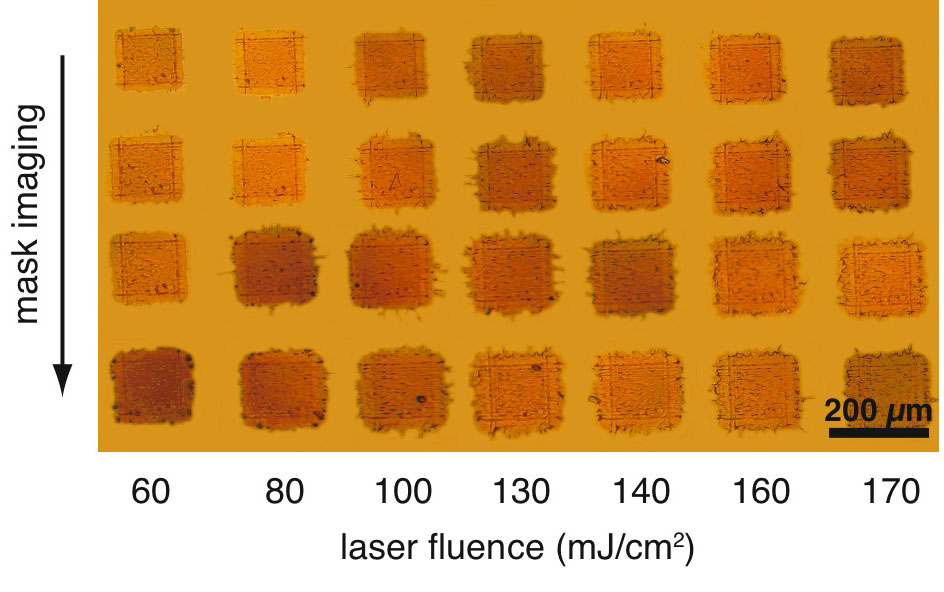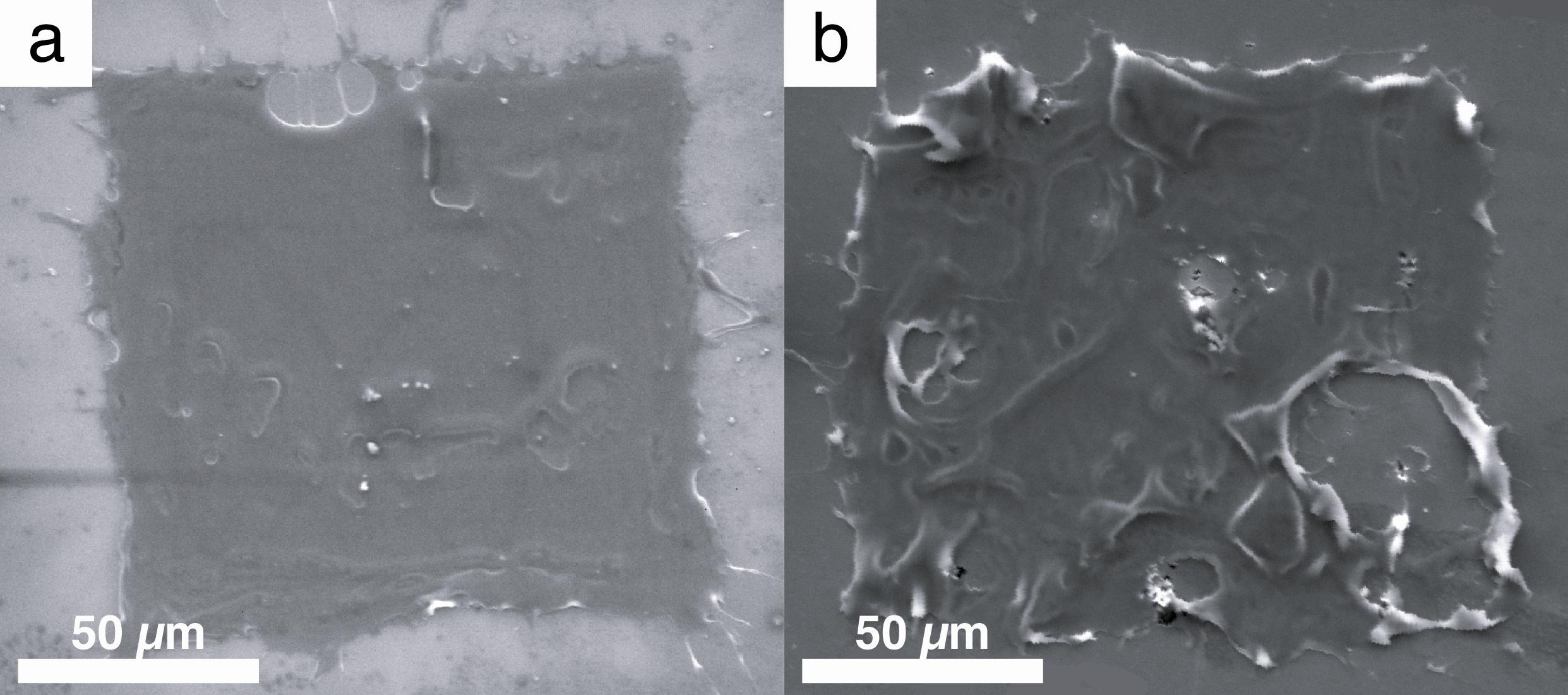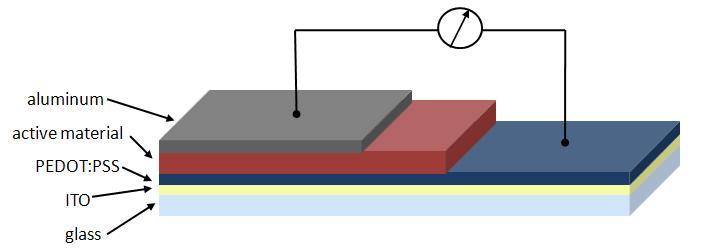Solar cell research is becoming increasingly important as the photovoltaic power industry experiences intense growth globally. Polymer-based organic solar cells offer the advantages of light weight, mechanical flexibility, and ease of processing, while their properties can be tuned by adjusting the chemical composition of the active layer. Deposition and patterning of polymer materials can be achieved by a variety of methods, most of which require liquid phase processing. Liquid deposition complicates the fabrication of all-organic, multilayer structures due to the interaction between solvents and materials from different layers. We achieve deposition of polymer materials in the solid phase, employing laser printing techniques, for organic photovoltaic applications.
An organic, bulk heterojunction solar cell includes a substrate which consists of a glass surface covered by indium tin oxide (ITO), on which a layer of poly(3,4-ethylenedioxythiophene):polystryrene sulfonate (PEDOT:PSS) is spin cast. ITO is a transparent conducting material, which serves as the anode electrode of the device, while allowing for illumination of the active layer. PEDOT:PSS is also a transparent conducting polymer, which helps decrease the hole barrier for charge collection. The active layer, which is typically composed of a solution of poly(3-hexylthiophene) (P3HT) and [6,6]-phenyl-C61-butyric acid methyl ester (PCBM), is then deposited on the substrate. The cathode electrode, usually Al, is deposited through a shadow mask, which defines the active area of the device.
 Optical microscope image of P3HT:PCBM spots, deposited on a glass substrate by the LIFT method. The deposition is performed entirely in the solid phase. The rectangular mask through which the laser beam is propagated is imaged on the P3HT:PCBM donor film and determines the shape and size of the printed spots. Here we show printing results for different imaging conditions of the rectangular mask, where the top row is closer to the mask being perfectly imaged on the donor film, while in the rows that follow the mask image is gradually becoming defocused. Apart from the imaging conditions, the laser fluence is allowed to vary as well. Laser printing of P3HT:PCBM films can be achieved for a wide range of laser fluences.
Optical microscope image of P3HT:PCBM spots, deposited on a glass substrate by the LIFT method. The deposition is performed entirely in the solid phase. The rectangular mask through which the laser beam is propagated is imaged on the P3HT:PCBM donor film and determines the shape and size of the printed spots. Here we show printing results for different imaging conditions of the rectangular mask, where the top row is closer to the mask being perfectly imaged on the donor film, while in the rows that follow the mask image is gradually becoming defocused. Apart from the imaging conditions, the laser fluence is allowed to vary as well. Laser printing of P3HT:PCBM films can be achieved for a wide range of laser fluences.
 SEM images of laser-deposited P3HT:PCBM films on glass/ITO/PEDOT:PSS substrates for two different laser fluences. In Figure b the laser fluence is 10 times higher than in Figure a. Even by changing the laser fluence by one order of magnitude we can still achieve material transfer without completely ablating the film away. However, the quality of the film deposited with higher laser fluence is significantly worse than the one deposited with lower laser fluence. Because organic solar cell performance depends on the morphology of the active layer, lower fluences just above the threshold for laser transfer appear to be more suitable for device fabrication.
SEM images of laser-deposited P3HT:PCBM films on glass/ITO/PEDOT:PSS substrates for two different laser fluences. In Figure b the laser fluence is 10 times higher than in Figure a. Even by changing the laser fluence by one order of magnitude we can still achieve material transfer without completely ablating the film away. However, the quality of the film deposited with higher laser fluence is significantly worse than the one deposited with lower laser fluence. Because organic solar cell performance depends on the morphology of the active layer, lower fluences just above the threshold for laser transfer appear to be more suitable for device fabrication.
